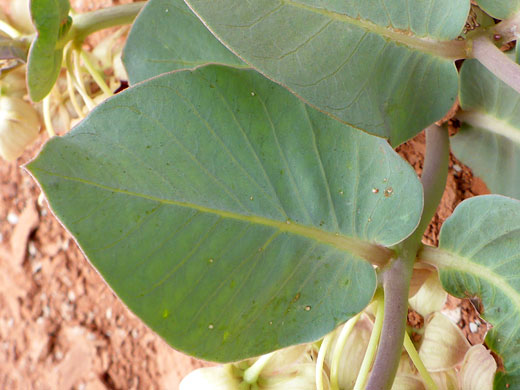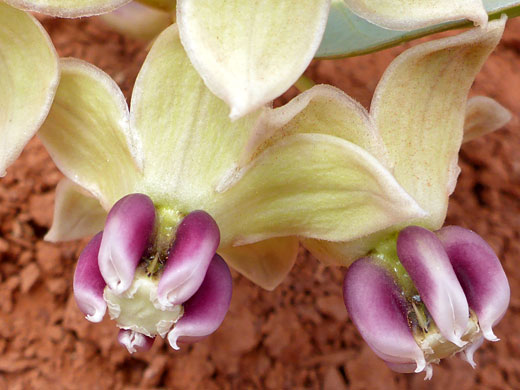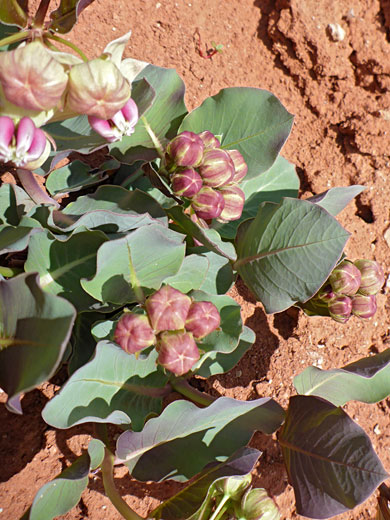Common names:
Jewel milkweed, pallid milkweed, Humboldt Mountains milkweed
Family:
Scientific name:
Asclepias cryptoceras
Main flower color:
Range:
Two distinct areas - from far north Arizona to southwest Wyoming, and from east California, across Nevada to southwest Idaho
Height:
Up to 10 inches
Habitat:
Hillsides, canyons, grassland, pinyon-juniper and oak woodland, on varied substrates; from 1,000 to 8,000 feet
Leaves:
Opposite, usually on short stalks, round to broadly ovate, hairless, grey-green, up to 3 inches long, pointed at the apex
Season:
April to July
Asclepias cryptoceras is a distinctive species, with large flowers relative to the overall small size of the plant. Although never very common, it occurs across a large area, from Idaho to western Colorado, with two subspecies, occupying distinct ranges - ssp cryptoceras in the Four Corners states and Wyoming, and ssp davisii in Nevada, Oregon and Idado.
Flowers form at the tip of the stem and the uppermost leaf node, in clusters of three to ten, attached by hairless pedicels up to 1.5 inches long. The five calyx lobes are narrow, linear and inconspicuous; much more prominent are the five ovate corolla lobes, greenish-yellow (often reddish underneath), strongly reflexed, the tips somewhat curved upwards. At the center is the fused, pale green column of anthers and styles, enclosed by the red/purple corona segments, topped by small, white teeth.
For the western plants, ssp davisii, the central column is longer than the coronal segments, while for ssp cryptoceras, the coronal segments are longer.
Flowers form at the tip of the stem and the uppermost leaf node, in clusters of three to ten, attached by hairless pedicels up to 1.5 inches long. The five calyx lobes are narrow, linear and inconspicuous; much more prominent are the five ovate corolla lobes, greenish-yellow (often reddish underneath), strongly reflexed, the tips somewhat curved upwards. At the center is the fused, pale green column of anthers and styles, enclosed by the red/purple corona segments, topped by small, white teeth.
For the western plants, ssp davisii, the central column is longer than the coronal segments, while for ssp cryptoceras, the coronal segments are longer.
All Contents © Copyright The American Southwest | Comments and Questions | Contribute | Site Map







